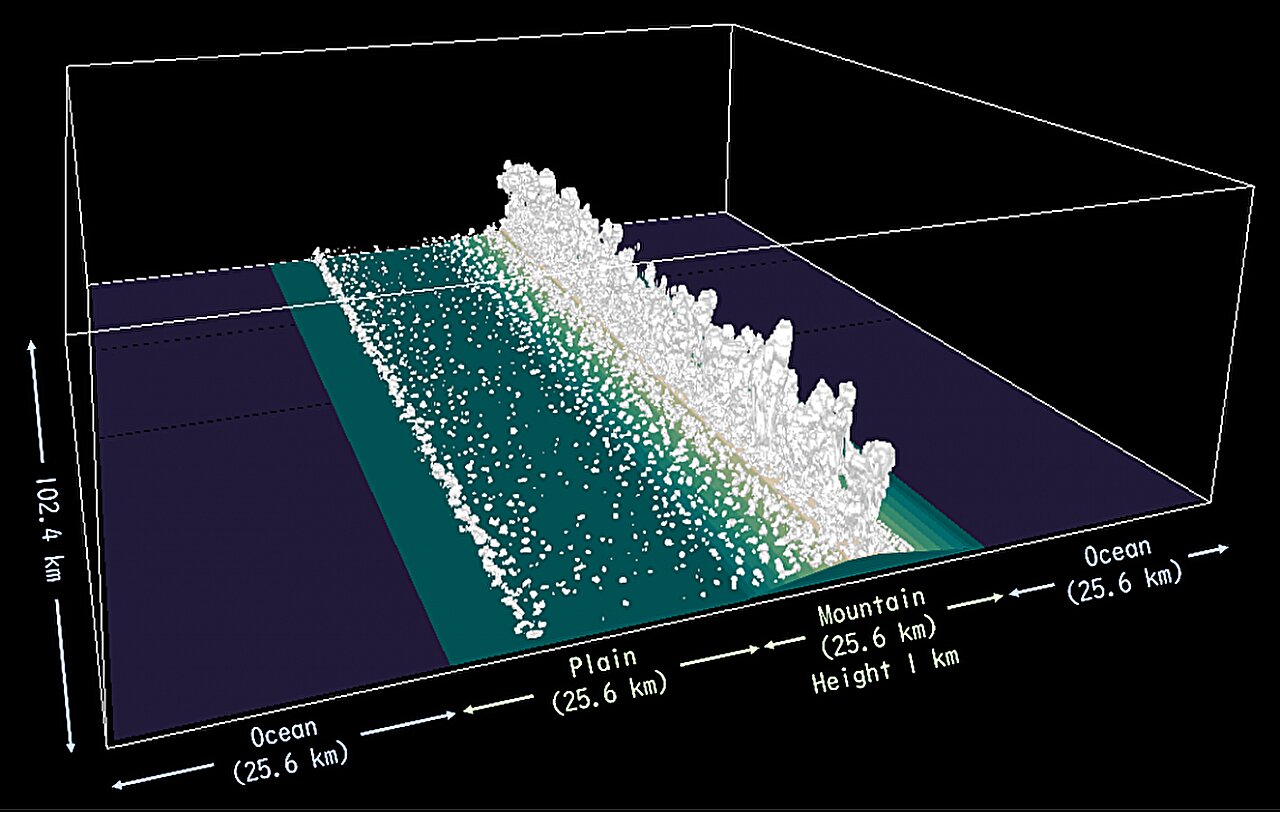A high-density rain gauge observational network in Taiwan reveals that multiple precipitation peaks exist over the mountainous island during summer afternoon convection. This contrasts with previous studies that identified only a single peak, suggesting that more complex physical processes may be involved in diurnal convection over mountainous islands.
To better understand the mechanisms behind multiple-peak convection, this study utilized large-eddy simulations (LES) with an idealized ocean-plain-mountain terrain configuration to investigate the leading factors of multi-peak diurnal precipitation over tropical mountainous islands.
This research was done by Ph.D. student Yu-Hsiu Wang from the Department of Atmospheric Sciences at National Taiwan University (NTUAS), with Associate Professor Wei-Ting Chen as the corresponding author. The study was supported by Professor Chien-Ming Wu's team and their self-developed Vector Vorticity equation cloud-resolving Model (VVM). The findings have been published in npj Climate and Atmospheric Science.
Abundant convective phenomena and dense meteorological observation networks in Taiwan create an ideal environment for studying afternoon convection over tropical islands with complex topography. VVM, with a high spatial resolution of 100 meters, allows for capturing crucial local circulation details, such as turbulence and land-sea-mountain-valley breezes driven by differential terrain heating.
The VVM simulations successfully reproduce two distinct orographically-locked precipitation peaks: the first peak is primarily driven by convective available potential energy (CAPE), while the second peak is enhanced by island-scale local circulation transported moist static energy (MSE).
Additionally, this study reveals that the sensitivity of convective precipitation to environmental conditions differs from previous expectations. Under drier free-tropospheric conditions, local circulation more effectively enhances the intensity of the second precipitation peak.
Moreover, the first precipitation peak modifies environmental humidity and MSE distribution, influencing the precipitation intensity and convective structure during the second peak. This highlights the crucial role of convection-environment interactions in inducing extreme precipitation.
This study provides a new perspective on understanding summer afternoon convection over tropical islands with complex topography, offering valuable insights into how climate change may affect extreme precipitation.
In the future, the research team plans to integrate simulations with realistic topography and observational data for further validation and analysis, providing a more robust scientific basis for addressing challenges posed by extreme weather events.
More information: Yu-Hsiu Wang et al, Novel perspectives on multiple-peak diurnal convection over a tropical mountainous island from idealized large-eddy simulations, npj Climate and Atmospheric Science (2024). DOI: 10.1038/s41612-024-00884-y
Journal information: npj Climate and Atmospheric Science


